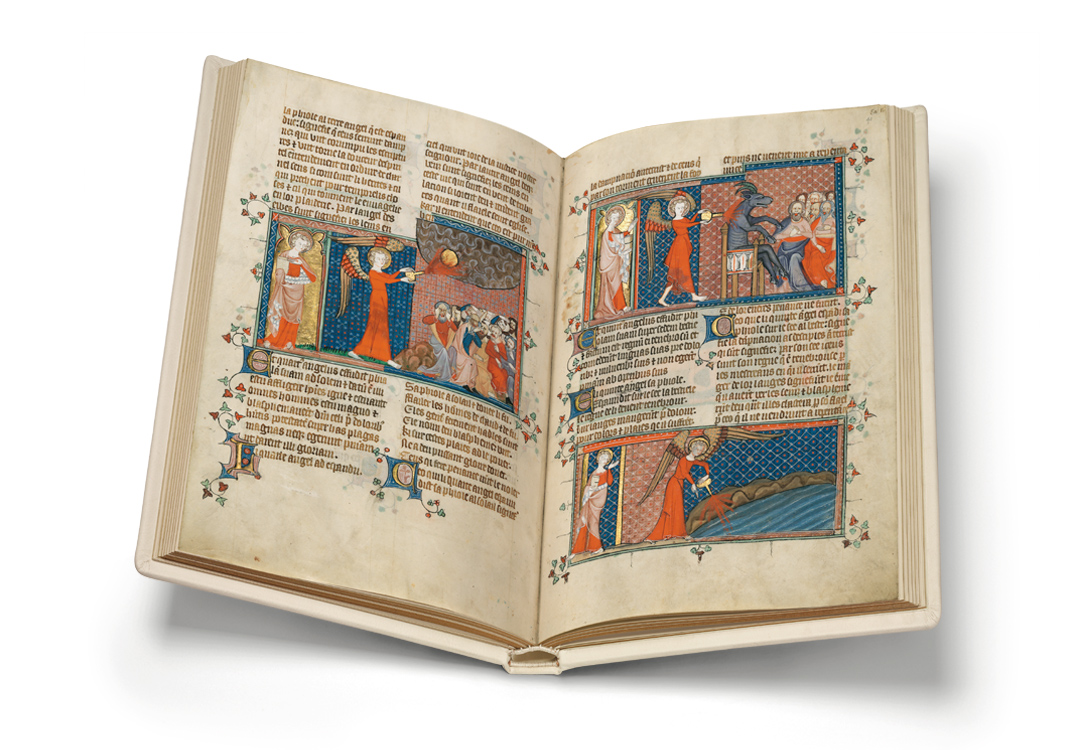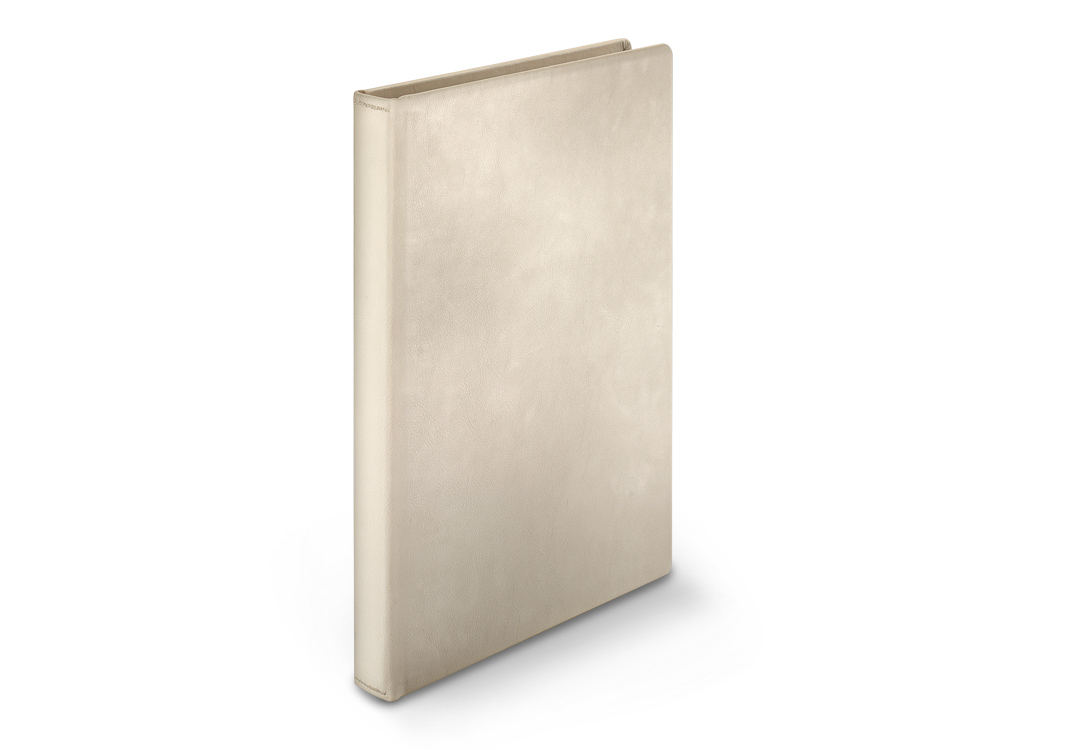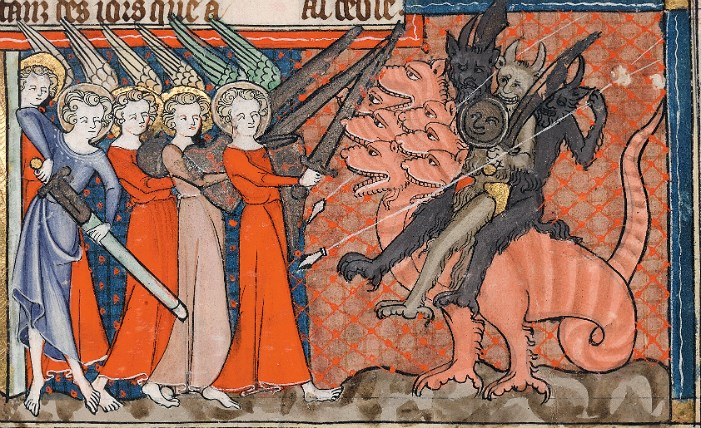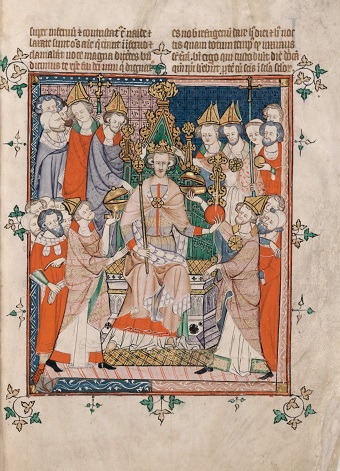The Corpus Apocalypse
The Most Lavishly Illustrated Apocalypse of the Gothic Era
“Almost every page is decorated with large miniatures, 121 in total. The vibrancy of their lively colours is intensified by brilliant burnished silver and gold, tooled with elaborate punch-dotted and fine incised linear patterns.” (Nigel Morgan, University of Cambridge)
Corpus-Christi-Apokalypse
The Corpus Apocalypse: The Manuscript
The Luminous Apocalypse
The Corpus Apocalypse is radiant, sparkling and shimmering. It is the most richly illuminated of all the English Apocalypses of the 14th century: no less than 121 large miniatures sparkling with gold and silver are placed on 72 leaves in a tightly packed sequence. The book illuminator of the Corpus Apocalypse presumably worked in London. By choosing intensive colours, notably vermilion, combined with sparking gold and silver, he created visual stimuli that correspond to the expressive language of the text he illustrated, the Revelation of John. The light hues of pink, violet and beige make for an attractive contrast with the opaque colours.
A Codex with Three Texts
The wealth of miniatures in the Corpus Apocalypse excels all other Apocalypse manuscripts of the period. The content is unique too, for in addition to the Revelation of John, the volume contains a wonderfully illustrated version of St. Paul’s Vision and an Anglo-Norman Coronation Order which might have been used at the coronation of Edward II in 1308. The codex is unique in combining these three texts. Since the magnificent manuscript was written in one campaign, i.e. by the same hand throughout, – and since it was illuminated by one or possibly two masters, we may well assume that the unusual combination was planned as a single unit, specifically commissioned by the patron.
A Noble Patron
The Corpus Apocalypse was probably produced between 1340 and 1350 for John de Cobham, a high officer of state to the English king, and luxuriously illustrated by one or two masters of book illumination in London. Some stylistic considerations apart, the actual patron could also have been John’s father, Henry de Cobham. The Cobhams were a leading family in southeast England. They had inherited the right to help carry the canopy above the king in the coronation procession. John de Cobham may well have attended the coronation of Edward III in 1327, while his father could have been present at the coronation of Edward II in 1308. This may explain the inclusion of the Coronation Order in this precious Apocalypse manuscript.

Corpus-Christi-Apokalypse
Under the Magnifying Glass: Figures with Expressive Facial Features
Corpus-Christi-Apokalypse
The Corpus Apocalypse: The Edition

The Manuscript and the Facsimile at a Glance
The Corpus Apocalypse is the most lavishly ornamented English Apocalypse of the 14th century. Using the highest quality of reproduction with the gold, silver and brilliant colours, the facsimile edition is a delight to look at! Every page is sparkling and shimmering – a feast for the eyes!
Manuscript: Cambridge, Corpus Christi College, MS 20
Date of Origin: c. 1340/50
Place of Origin: London
Dimensions: c. 37.0 x 26.0 cm
Extent: 144 pages (72 leaves)
Artists: one or two masters in London
Patron: John de Cobham or his father Henry de Cobham, high-ranking officials in the service of the English king
Illumination: 121 large miniatures, 59 gold initials, 280 blue initials on red fleuronné pen work, gold, silver and vermillion, fine tooling
Binding: white leather
Commentary Volume for the Facsimile Edition by Nigel J. Morgan / Peter K. Klein / Christopher de Hamel / Daron Burrows
Print run: 680 copies
Corpus-Christi-Apokalypse
Enjoy Viewing 10 Sample Pages:
A Glance at the Facsimile
The section of the Corpus Apocalypse reproduced here shows the sequence of fols. 39r–43v. The illustrations represent the Seven Angels with the Bowls, pouring out the vessels of God’s wrath (Apoc. 16:1–21), and the Whore of Babylon (Apoc. 17:1–5). The colours employed for the figures and the ornamented grounds are harmoniously composed, ranging from vermillion to a soft pale grey.
The framed rectangular miniatures are set in a two column text, the miniatures extending throughout over both columns. Similar to the initials, small delicate sprays of foliage sprout from the corners of the frames.
Corpus-Christi-Apokalypse
A Challenging Production: fac simile
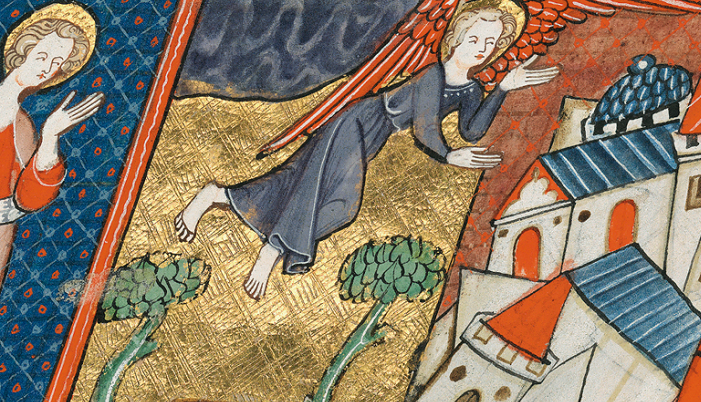
Brilliant Gold
For centuries, the gold and silver applied in the Corpus Apocalypse have preserved their brilliance. Most of the gold grounds are decorated with incised linear or punch-dotted patterns. For their reproduction, suitable tools have to be specifically cut. Impressing the design, the artisan has to take great care to prevent the fine lines and patterns from showing on the back side of the leaf. Reproducing the traces of ageing requires modifying the patination of the gold so that after several print runs a lively effect is obtained. It means a lot of work for the lithographer and the printer!
Expertise, Experience and Care
Gold and silver shimmering in different ways, fine incised linear and punch-dotted patterns, vibrant vermillion! There is no machine to replace the lithographer’s trained eye and experience as he compares the print with the original. He must not only detect the smallest colour variations and the deviating hues of the metal surfaces, but also assess whether the overall appearance matches the original.
The same applies to the highly specialized work of the bookbinder. He folds the printed sheets and sews the sections together to form the book-block. The book-block is then attached to the boards. The headband is embroidered by hand – in the case of the Corpus Apocalypse the thread is even passed through the spine.
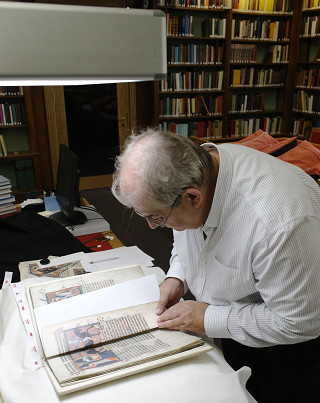
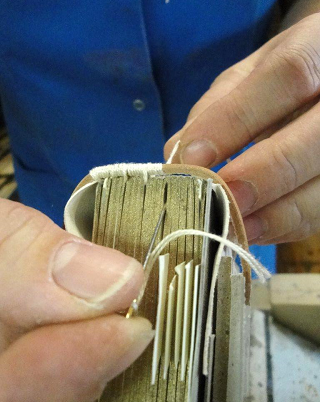
Corpus-Christi-Apokalypse
The Facsimile Folder for the Edition
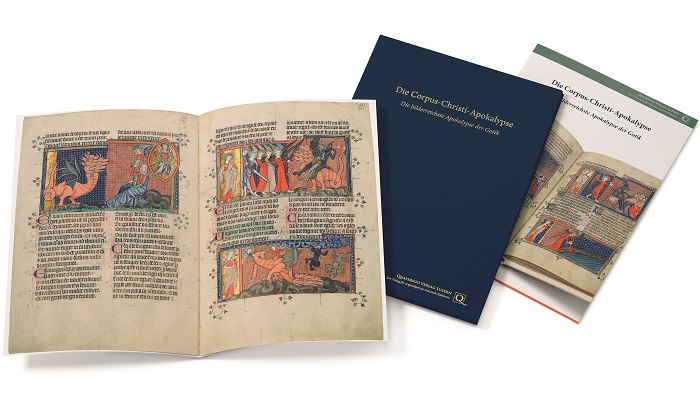
The facsimile folder contains a four-page original facsimile leaf depicting four miniatures. On the inner side at the left, the seven-headed dragon threatens to devour the woman’s newborn child (fol. 27v). At the right, the Archangel Michael fights the dragon (fol. 28r). On the outer sides, two other scenes from Apoc. 12:1–18 are represented.
Corpus-Christi-Apokalypse




